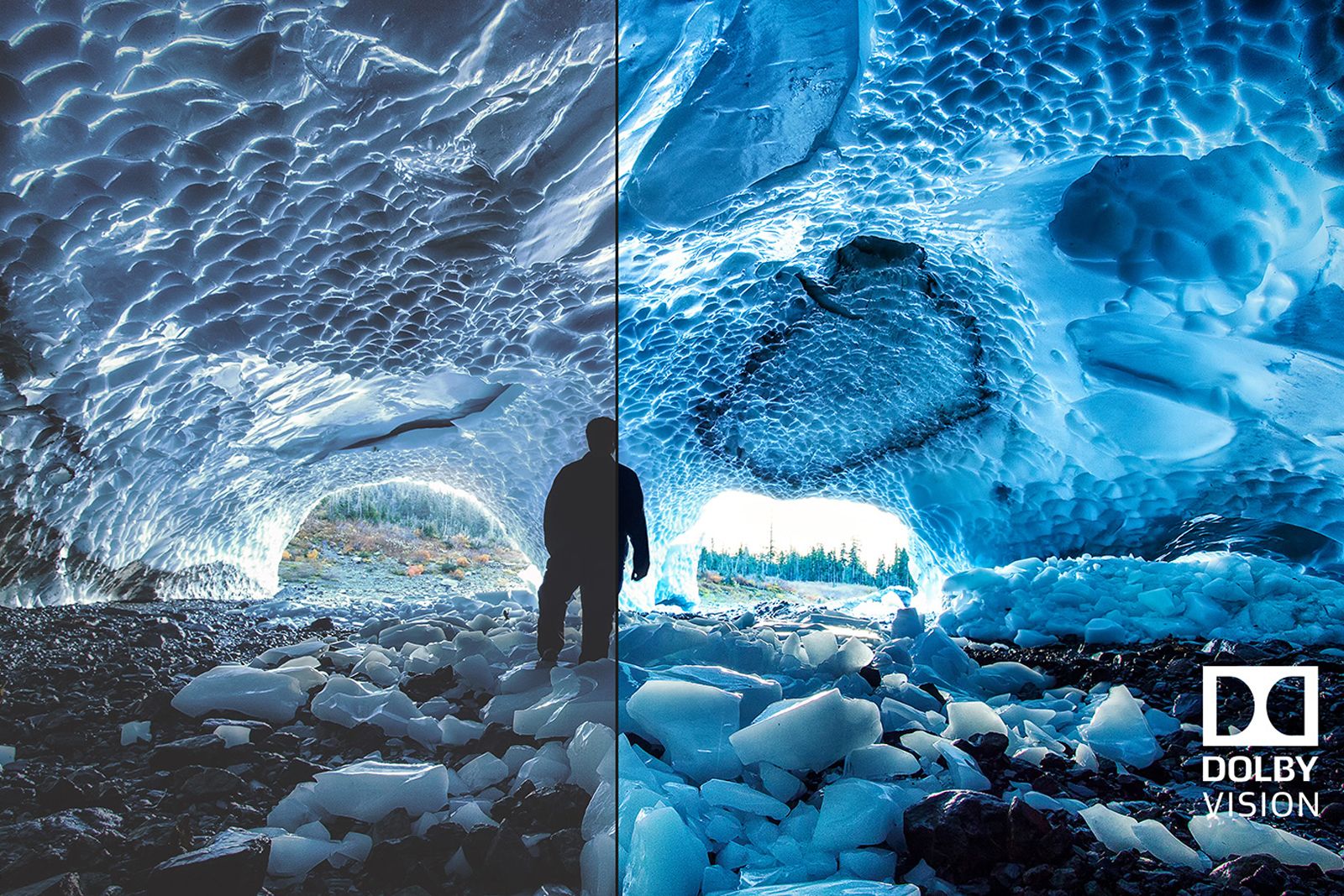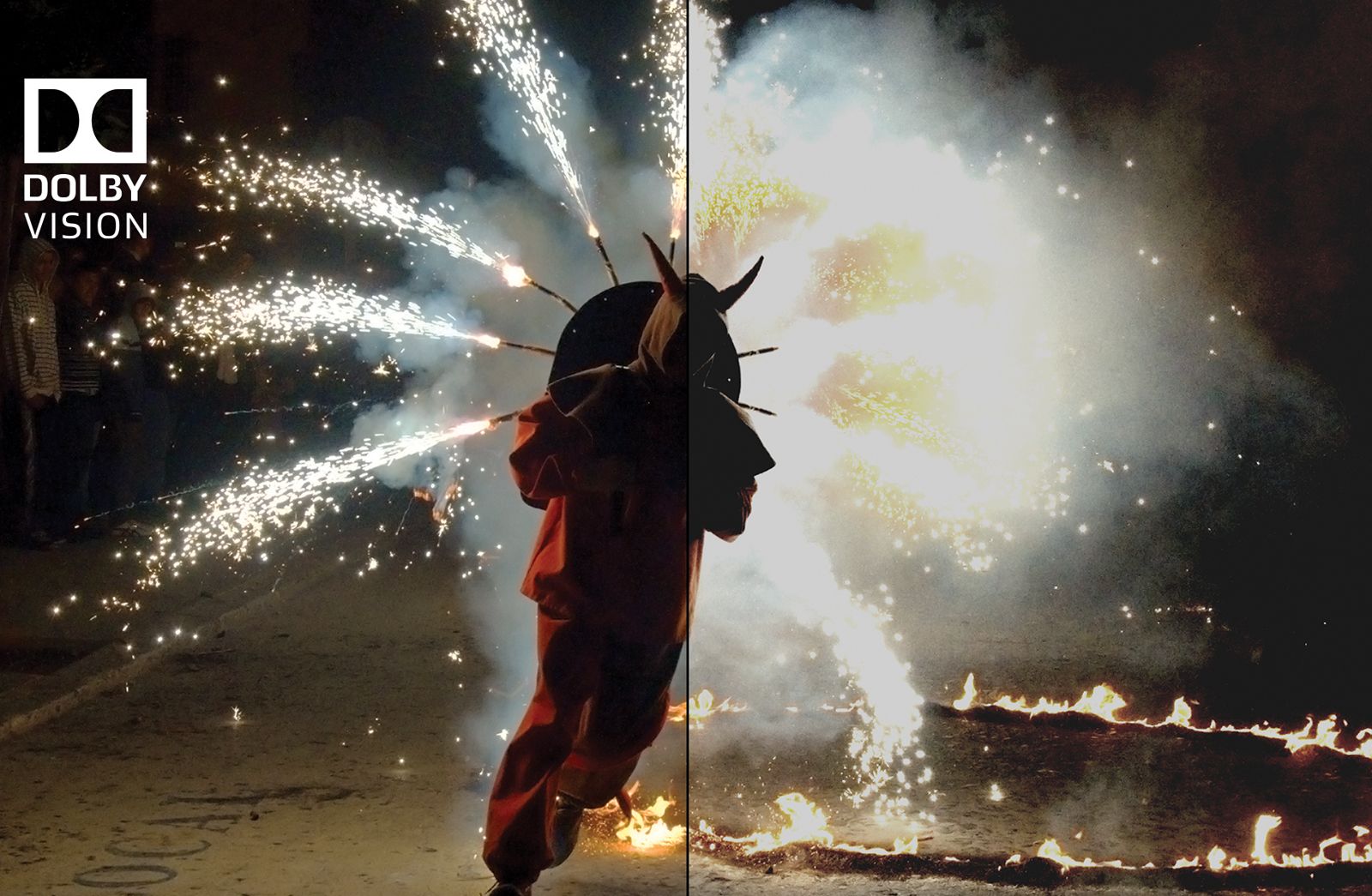Much has been made of the recent move by many streaming providers to reduce streaming quality in Europe as a result of a European Union request.
But Dolby got in touch to remind us that HDR (High Dynamic Range) doesn’t rely on bandwidth and can, of course, be applied to Standard Definition (SD) streams.
HDR offers you a wider range of colour, balancing out light and dark areas in an image so you don’t lose quality in very light or very dark areas (often these are shadows). There’s much more graduation from light to dark than there is in an SDR image.
The ins-and-outs of the EU bandwidth-protecting request are many, not least that the request seemed to originate from a single EU commissioner, while organisations including BT tell us that broadband demand remains well within capacity, even if the way we’re using that bandwidth has shifted around a bit in terms of what we’re using it for and when we’re using it.
The side effects from a reduction in quality are a loss in resolution or a softer picture. But HDR can address this challenge, enabling viewers to see more detail. Certainly, SD/HD pictures will look better with HDR-enabled than without. We spoke to Tom Lattie - senior director of commercial partnerships at Dolby – who explained to us how HDR tech such as Dolby Vision can help.
“It adds more detail and range back into the picture,” he explains. “When you talk about video compression, one of the things that everyone does - since the beginning of time - is that in order to get a more aggressive bit rate, you start playing tricks in the processing before you encode.
"So you reduce resolution, you remove detail, you know, you so-called soften the picture and that pre-processing allows the picture to be easier to encode. Obviously, the encoding tools have gotten much more sophisticated, so you see a bit less squishy images.
"But one of the things about HDR is you still have higher contrast. So the human eye perceives more detail, more contrast and so it's helping [to] alleviate some of that.”
“Even if you're streaming say to an iPhone, which is a Dolby Vision HDR device, the top bit rate and the bottom bit rate all have HDR on them. Even at those lower resolutions and one of the interesting things about high dynamic range is it does trick your eye into seeing that contrast difference which your eye sees as detail, which then most people perceive as resolution versus dynamic range.
"And so even as you begin to soften the picture for more aggressive encoding, you can still kind of compensate for that with HDR."
A common misconception is that HDR takes up a lot of bandwidth, but Lattie suggests it only adds “five or 10 percent overhead versus SDR at the same resolution. So HDR does add additional bandwidth, but it's negligible.”
We also asked Lattie why the perception is that HDR seems to be connected to 4K in many people’s minds. “HDR and Dolby Vision and even immersive sound have been associated with 4K because a lot of content creators have launched those formats along with 4K, whether on Blu-ray or streaming.
“My team has spent a lot of time with our content distribution partners and even in their consumer research – [it’s true that] bundling the two [4K and HDR] in the marketing it's much easier for people to understand the difference.”
Getting the message across
Lattie admits that talking to consumers about HDR benefits is difficult to do. “To be honest with you, I think one of the real challenges is that it's like the old megapixel race or clock speed on CPUs. It's all about, you know, screen size and resolution. Consumers really understand 2K versus 4K. That's a real clean, simple kind of thing to explain.
“High Dynamic Range versus standard dynamic range is a really complex thing to get across it's one of those things that when you see it, you get it but it's hard to describe.”
Dolby Cinema has helped with that. But it’s much easier to show someone and then when they see it then they get it. I think it'll change as more services launch with HDR.
“I mean, Netflix has thousands of hours now but it's kind of one example. Amazon has some shows, but I think with platforms like Disney launching, you're seeing a lot more HDR. They went back and remastered so much stuff and that'll hopefully help consumers [to understand the technology more].”



